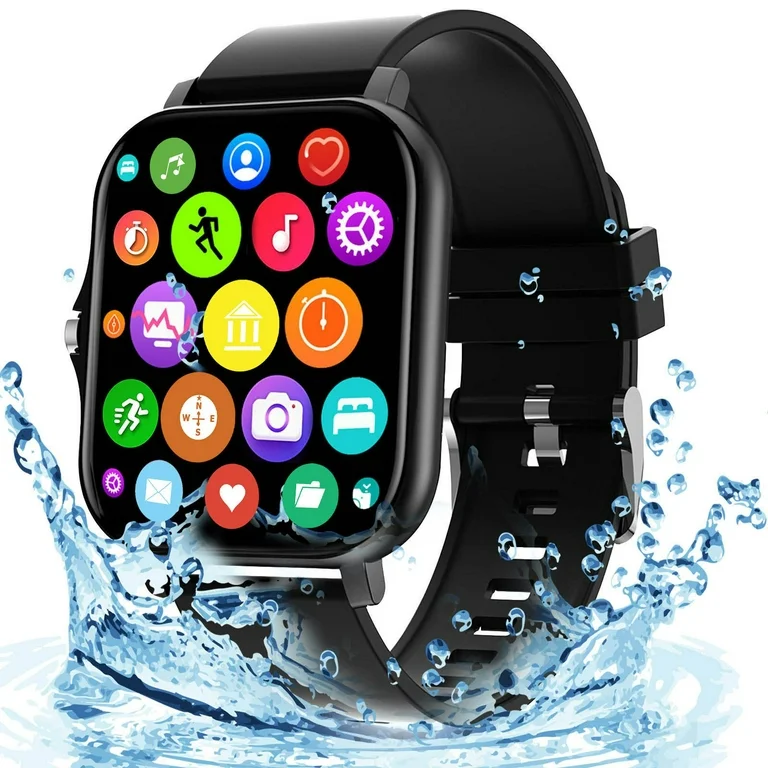In recent years, the internet has become a haven for bird lovers, commonly referred to as “internet chicks.” This term encompasses a diverse group of enthusiasts who use online platforms to share their passion for birds. From pet owners documenting the lives of their feathered friends to wildlife photographers capturing stunning images of birds in their natural habitats, the online avian community is vibrant and growing.
Purpose of the Article
This article aims to explore the world of internet chicks, providing insights into the history, platforms, and key figures that shape this unique online community. Whether you’re a seasoned birdwatcher or a newbie looking to join the flock, this guide will help you navigate the myriad of resources and opportunities available online.
Who Should Read This?
Anyone with an interest in birds, whether as a hobby or a professional pursuit, will find value in this article. It’s designed for bird owners, wildlife photographers, conservationists, and casual birdwatchers alike. By the end, you’ll have a comprehensive understanding of how to become an active and engaged member of the online avian community.
1. Understanding the Trend
The Rise of Online Avian Communities
The internet has revolutionized the way we connect with fellow enthusiasts, and bird lovers are no exception. Online avian communities have surged in popularity, providing a platform for sharing knowledge, experiences, and media. This trend can be attributed to the universal appeal of birds and the convenience of digital communication, which allows enthusiasts from all over the world to interact.
Why Birds?
Birds captivate us with their beauty, diversity, and behaviors. They are accessible to people in both urban and rural settings, making birdwatching a widely enjoyed activity. The appeal of birds lies in their ability to inspire wonder and curiosity, making them perfect subjects for photography, study, and conversation.
The Appeal of Internet Chicks
Internet chicks bring a personal touch to birdwatching by sharing stories, photos, and videos of their feathered friends. These platforms allow enthusiasts to connect on a deeper level, fostering a sense of community and shared passion. The ease of access to information and the ability to share experiences instantly have made online avian communities a preferred way for many to engage with their love of birds.
2. History of Avian Enthusiasts Online
Early Online Birdwatching Forums
The history of online avian communities dates back to the early days of the internet. Birdwatching forums were among the first platforms where enthusiasts could exchange information and discuss their sightings. These forums served as a precursor to the more sophisticated social media platforms we see today, providing a space for hobbyists to connect and share their passion.
Evolution of Avian Social Media
As social media evolved, so did the ways in which bird lovers could interact. Platforms like Facebook, Instagram, and Twitter provided new opportunities for sharing content and connecting with like-minded individuals. These sites offered more dynamic and visually engaging ways to share bird-related content, significantly broadening the reach of the avian community.
Key Milestones in the Online Avian Community
Several key milestones have shaped the online avian community. The advent of high-quality digital cameras and smartphones allowed for the widespread sharing of bird photography. The rise of video content on platforms like YouTube enabled enthusiasts to create and consume detailed birdwatching guides and documentaries. Additionally, the increased awareness of bird conservation issues has driven many to use these platforms to advocate for the protection of avian species.
3. Popular Platforms for Avian Enthusiasts
Facebook Groups and Communities
Facebook remains a popular platform for bird lovers, with countless groups dedicated to various aspects of avian interest. These groups range from general birdwatching communities to specialized groups focusing on specific species or regions. The interactive nature of Facebook allows members to share photos, videos, and experiences, as well as ask questions and seek advice from fellow enthusiasts.
Instagram: Birds in Visual Splendor
Instagram is a visual-centric platform that is ideal for showcasing the beauty of birds. Bird photographers and enthusiasts alike use Instagram to share stunning images and short videos of their avian encounters. The platform’s use of hashtags enables users to reach a wider audience and connect with others who share their passion for birds.
Twitter: Chirping About Birds
Twitter is another valuable platform for the avian community, providing a space for quick updates and real-time interactions. Birdwatchers use Twitter to share sightings, news, and conservation updates. The use of concise messaging and hashtags helps to foster a dynamic and engaged community of bird lovers.
YouTube: Avian Video Content
YouTube is a treasure trove of bird-related video content. From educational videos and documentaries to live streams of bird nests, YouTube offers endless opportunities for learning and entertainment. Birdwatchers and professionals alike use the platform to share their knowledge and experiences, reaching a global audience.
Specialized Avian Forums and Websites
In addition to mainstream social media platforms, there are numerous specialized forums and websites dedicated to birdwatching and avian care. These platforms provide in-depth discussions, detailed guides, and a wealth of resources for enthusiasts. Websites like eBird and BirdForum offer tools for tracking bird sightings and connecting with other birdwatchers.
4. Types of Internet Chicks
Pet Birds: Domestic Companions
Pet birds hold a special place in the hearts of their owners. Online communities dedicated to pet birds offer advice on care, feeding, and training. Owners share stories and photos of their feathered friends, providing support and fostering a sense of camaraderie among bird lovers.
Wild Birds: Observations and Studies
For those interested in wild birds, the internet offers a wealth of information and opportunities to share observations. Platforms like eBird allow users to log sightings and contribute to citizen science projects. Enthusiasts share photos and videos of wild birds, often engaging in discussions about behavior, habitat, and conservation.
Exotic Birds: Rare and Unique Species
Exotic bird enthusiasts are drawn to the rare and unusual species that can be found around the world. Online communities provide a space to discuss the care and breeding of these birds, as well as share photos and experiences. These platforms are invaluable for learning about the specific needs and characteristics of exotic birds.
Also Read: Https //www.microsoft.com /ink
5. Becoming Part of the Community
Creating an Online Presence
To become part of the online avian community, start by creating a profile on your chosen platform. Use a recognizable username and a profile picture that reflects your interest in birds. Share a brief bio outlining your avian interests and what you hope to gain from joining the community.
Choosing the Right Platform
Selecting the right platform depends on your interests and goals. If you enjoy sharing photos, Instagram might be the best choice. For detailed discussions and advice, specialized forums or Facebook groups may be more suitable. Consider the type of content you want to share and the kind of interactions you seek when choosing a platform.
Engaging with Fellow Enthusiasts
Active engagement is key to becoming a valued member of the community. Comment on posts, ask questions, and share your own experiences. Be respectful and supportive of others, and take the time to build genuine connections. Engaging with fellow enthusiasts will enrich your experience and help you learn and grow in your avian pursuits.
6. Sharing Your Avian Adventures
Photography Tips for Capturing Birds
Capturing the beauty of birds requires patience and skill. Invest in a good camera with a zoom lens to get close-up shots without disturbing the birds. Learn about lighting and composition to enhance your photos. Practice regularly and experiment with different settings to improve your skills.
Video Recording Techniques
Video content allows you to showcase bird behavior and interactions in a dynamic way. Use a tripod to keep your camera steady and capture smooth footage. Record in high definition to ensure clear, detailed videos. Pay attention to audio quality, and consider using a microphone to capture natural sounds.
Writing Engaging Content About Birds
When writing about your avian adventures, aim to be informative and engaging. Share interesting facts and observations, and use descriptive language to paint a vivid picture for your readers. Personal anecdotes and stories can add a unique touch to your content, making it more relatable and enjoyable.
7. Ethical Considerations
Respecting Wildlife
Respect for wildlife is paramount when engaging with birds, both online and in the field. Avoid disturbing birds or their habitats, and always adhere to ethical birdwatching practices. Use your online presence to promote respectful and responsible interactions with birds.
Ethical Birdkeeping Practices
For pet bird owners, ethical practices include providing proper care, nutrition, and enrichment. Ensure that your birds have a suitable living environment and regular veterinary care. Avoid supporting illegal trade and be mindful of the source of your birds.
Avoiding the Spread of Misinformation
The internet can be a breeding ground for misinformation. Always verify the accuracy of the information you share and consult reliable sources. Be cautious of spreading myths or unverified claims, and use your platform to educate and inform others responsibly.
8. The Role of Citizen Science
Contributing to Bird Conservation
Citizen science projects provide valuable data for bird conservation efforts. By participating in these projects, you can contribute to scientific research and help protect bird populations. Platforms like eBird allow you to log your sightings and participate in global bird counts.
Participating in Online Bird Counts
Online bird counts are an excellent way to get involved in citizen science. These events often take place annually and involve counting birds in a specific area over a set period. Your participation can provide critical data for researchers studying bird populations and trends.
Collaborating with Researchers
Many online platforms offer opportunities to collaborate with researchers and contribute to scientific studies. Share your observations and data with researchers, and stay informed about ongoing studies and conservation efforts. Your contributions can make a significant impact on bird conservation.
Conclusion
The world of online avian enthusiasts, often lovingly referred to as “Internet chicks,” has transformed how people interact with and appreciate birds. From sharing captivating photos on Instagram to engaging in detailed discussions on specialized forums, the internet has provided a platform for bird lovers to connect, learn, and contribute to the avian community in unprecedented ways.
Recap of Key Points
Throughout this article, we’ve explored the diverse facets of the online avian community. We began by understanding the trend’s origins and the history of avian enthusiasts online, noting key milestones and the evolution of these communities. We’ve delved into the popular platforms where bird lovers congregate, from Facebook groups to YouTube channels, highlighting the unique content and interactions each platform offers.
We’ve examined the different types of birds that capture enthusiasts’ interest, from common pets to exotic species, and provided guidance on how newcomers can join and contribute to these communities. We discussed the importance of ethical considerations, ensuring respect for wildlife and responsible sharing of information. The role of citizen science was highlighted, showcasing how enthusiasts can contribute to real scientific research and conservation efforts.



